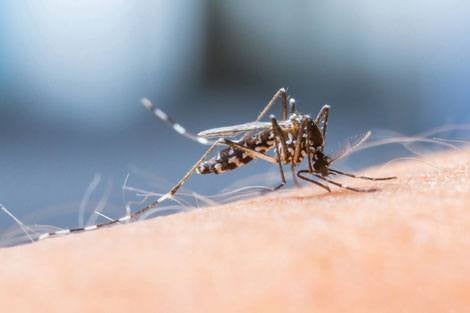Finding could lead to new strategies for malaria control
For immediate release: June 6, 2014
Boston, MA – Researchers have found the first evidence of an intercellular bacterial infection in natural populations of two species of Anopheles mosquitoes, the major vectors of malaria in Africa. The infection, called Wolbachia, has been shown in labs to reduce the incidence of pathogen infections in mosquitoes and has the potential to be used in controlling malaria-transmitting mosquito populations.
“Wolbachia is an interesting bacterium that seems perfectly suited for mosquito contr[ol. However, there were strong doubts that it could ever be used against field Anopheles populations,” said Flaminia Catteruccia, associate professor of immunology and infectious diseases at Harvard School of Public Health (HSPH) and at the University of Perugia, Italy. “We were thrilled when we identified infections in natural mosquito populations, as we knew this finding could generate novel opportunities for stopping the spread of malaria.”
The study appears online June 6, 2014 in Nature Communications.
Anopheles mosquitoes are the deadliest animal on the planet. They are responsible for transmitting malaria, which causes more than 600,000 deaths each year and puts half of the world’s population at risk for diseases. Wolbachia infections spread rapidly through wild insect populations by inducing a reproductive phenomenon called cytoplasm incompatibility (CI), and 66% of arthropod species are infected. However, it was commonly thought that Anopheles mosquitoes were not natural hosts for Wolbachia infections, and attempts to identify infections in these mosquitoes in the field had failed.
Co-author Francesco Baldini, from University of Perugia, Italy and HSPH, in collaboration with researchers from CNRS, France, collected Anopheles mosquitoes from villages in Burkina Faso, West Africa, and analyzed their reproductive tracts. Their objective was to identify all the bacteria in the reproductive systems of both male and female mosquitoes; they were not looking directly for Wolbachia. To their surprise, they found a novel strain of the infection, which they named wAnga.
The researchers say they can now investigate whether the wAnga strain shares properties with other Wolbachia strains, which could make control strategies possible by inducing CI and reducing Plasmodium (the parasite that causes malaria) numbers in Anopheles mosquitoes in the field. “If successful, exploiting Wolbachia infections in malaria mosquitoes could reduce the burden of the disease globally,” said co-author Elena Levashina, from the Max Planck Institute for Infection Biology, Berlin.
Other main authors of the study included Nicola Segata from the University of Trento, Italy, and Julien Pompon from CNRS, France.
This work was funded by a European Research Council FP7 ERC Starting Grant project ‘Anorep’ (grant ID: 260897), a Biotechnology and Biological Sciences Research Council grant (grant BB/I002898/1) and a Wellcome Trust grant (grant ID: 093553) to F.C., by the European Union FP7 grant (PCIG13-618833) and startup funding at the Centre for Integrative Biology (University of Trento) to N.S., by the EC FP7 Networks of Excellence EVIMalaR (242095) to E.A.L. and F.C., and by an ANR-11-BSV7-009-01 GIME to E.A.L. F.C. was supported by an NIH grant (grant ID: NIH 1R01AI104956-01A1). J.P. was supported by fellowships from FRM and the Fondation Des Treilles.
“Evidence of natural Wolbachia infections in field populations of Anopheles gambiae,” Francesco Baldini, Nicola Segata, Julien Pompon, Perrine Marcenac, W. Robert Shaw, Roch K. Dabiré, Abdoulaye Diabaté, Elena A. Levashina, Flaminia Catteruccia, Nature Communications, DOI: 10.1038/ncomms4985, online June 6, 2014.
For more information:
Todd Datz
tdatz@hsph.harvard.edu
617.432.8413
photo: iStockphoto.com
###
Harvard School of Public Health brings together dedicated experts from many disciplines to educate new generations of global health leaders and produce powerful ideas that improve the lives and health of people everywhere. As a community of leading scientists, educators, and students, we work together to take innovative ideas from the laboratory to people’s lives—not only making scientific breakthroughs, but also working to change individual behaviors, public policies, and health care practices. Each year, more than 400 faculty members at HSPH teach 1,000-plus full-time students from around the world and train thousands more through online and executive education courses. Founded in 1913 as the Harvard-MIT School of Health Officers, the School is recognized as America’s oldest professional training program in public health.
